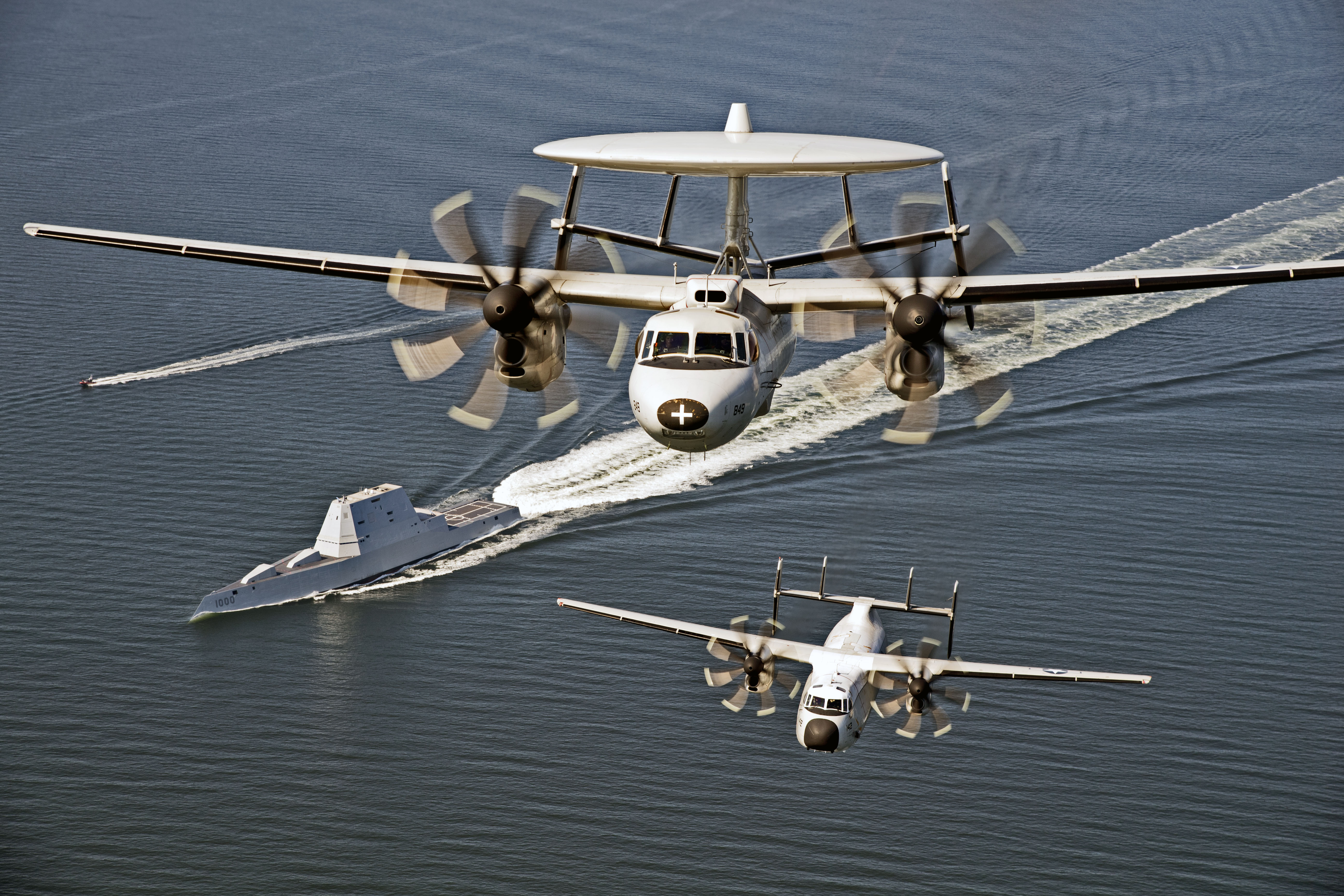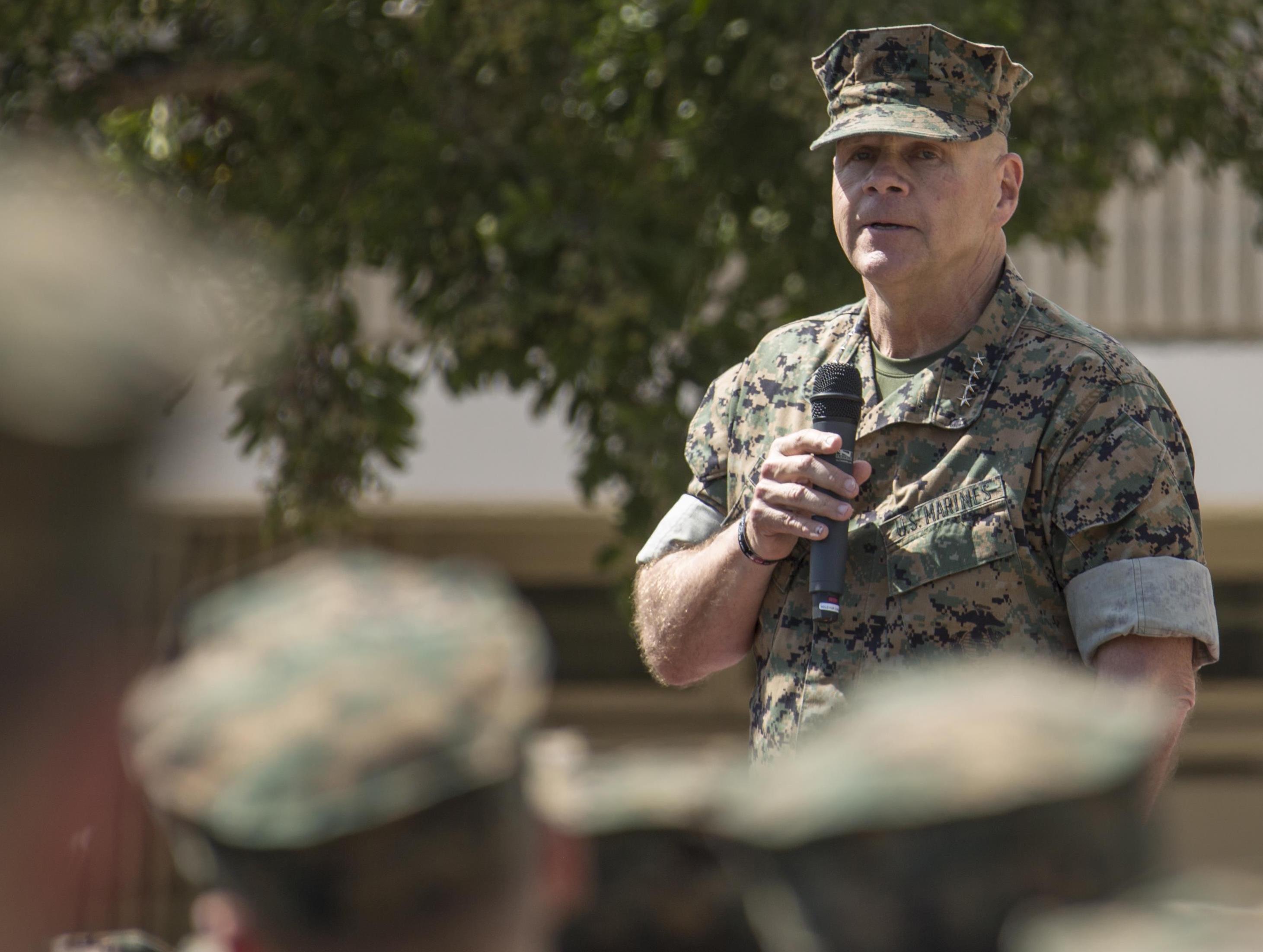
The Navy and Marine Corps requested just $1.7 billion in additional spending in their Fiscal Year 2019 unfunded priorities lists, an annual list to Congress of projects not covered by the formal budget request – a fraction of last year’s combined $8.2 billion in requests from the two services.
The Navy’s $1.5-billion request calls for a modest increase in armaments, accelerating the purchase of two Northrop Grumman E-2D Advanced Hawkeye early warning radar aircraft, and several initiatives that would speed development in cyber warfare and networked warfare through the Naval Integrated Fire Control-Counter Air (NIFC-CA) system.
Comparatively, the Navy’s $5.3-billion FY 2018 list called for 20 new aircraft, a range of amphibious landing craft and additional weapons and munitions.
The Marines have an even more modest request of $235 million, strictly for military construction projects that would include a new mess hall at Camp Pendleton, Calif., a welding shop in Albany, Ga. and a cryogenics facility in Beaufort, S.C.
The Navy attributed the lower sum of unfunded priorities to the higher top line in the formal budget request, after lawmakers recently passed a two-year budget deal that gives more certainty – and more money than previously allowed under the Budget Control Act – to the annual defense appropriations process.
“The Navy appreciates the hard work of Congress to enact the Bipartisan Budget Act of 2018 that significantly increases DoD and Navy spending levels for both FY2018 and FY2019,” Navy spokeswoman Lt. Lauren Chatmas told USNI News today.
“This has resulted in a lower level of critical unfunded priorities in FY19. The FY19 unfunded priorities list represents additional opportunities to accelerate readiness recovery and increase lethality.”
In recent years, and particularly in aviation spending, lawmakers have proven willing to find room in the budget for items in the Unfunded Priorities List. The Navy has been able to buy dozens of F/A-18E/F Super Hornets in particular thanks to lawmakers’ interest in adding in items from this annual supplemental request.
Navy

The largest line item in the Navy’s $1.5-billion list is $340 million for the acquisition of two Northrop Grumman E-2D Advanced Hawkeyes, to bring the FY 2019 total to six aircraft. The Navy also requested $176 million for public shipyard investment and $121 million for upgrades to a San Diego graving dock to accommodate Arleigh Burke-class DDG-51 guided-missile destroyers.
The service also asked for $30 million to buy 10 additional Lockheed Marked-built Long Range Anti-Ship Missiles (LRASMs) and for $12 million to buy 48 Boeing Harpoon Block II+ anti-ship missiles.
The Navy requested $46 million for 48 Raytheon AIM 9-X Block II Sidewinder anti-air missiles that will increase the buy from 192 to 250, $19 million to fund research into a new rocket motor for the service’s planned Raytheon-built SM-6 Block 1B anti-air and anti-surface missiles, and $80 million for a supersonic target to simulate tactical and ballistic missile threats. The service is also asking for $34 million to create three mobile mission control stations for MQ-8 Fire Scout unmanned aerial vehicle training, to help with pre-deployment training for aviation detachments on Littoral Combat Ships.
The service also asked for $95.4 million in so-called cyber boundary defense for a variety of different platforms, including the E-2D ($27.5 million) and the unmanned MQ-25A Stingray carrier tanker and future unmanned aircraft ($3.4 million). The Navy also asked for $14.4 million to upgrade three-classes of smaller ships to Windows 10. In the computer hardware realm, the service would spend $61.1 million to replace legacy IBM Blade servers on 19 guided-missile destroyers and cruisers and two Aegis Ashore sites to allow them to upgrade to accommodate new weapon systems.
Marine Corps

The Marine Corps requested just $235.9 million in military construction funds in its FY 2019 Unfunded Priorities List. Projects include $71.7 million for a mess hall and consolidated warehouse and $16.6 million for a supply warehouse at Marine Corps Base Camp Pendleton in California; $31.9 million for a welding and body repair shop facility at Marine Corps Logistics Base Albany in Georgia, which was hit hard by a January 2017 tornado; $51.3 million for the second phase of a 2nd Radio Battalion complex at MCB Camp Lejeune in North Carolina; $13.1 million for the second phase of an ammunition supply point upgrade at MCB Quantico in Virginia; and $6.3 million for a cryogenics facility at Marine Corps Air Station Beaufort in South Carolina.
The request is much smaller than previous years – the Marines asked for $3.2 billion in FY 2018 and $2.7 billion in FY 2017 in their Unfunded Priorities Lists and included big-ticket items like aircraft, amphibious surface connectors, radars and weapons. Despite the size of the request, though, the fact that the service asked for military construction funding is not entirely surprising.
Commandant Gen. Robert Neller, asked by USNI News earlier this month how the FY 2019 budget request would help achieve “wholeness” in the Marine Corps, replied that taking care of facilities would be a big part of that effort.
For the Marines more than any other service, personnel costs consume a high percentage of the budget – “Sixty-five percent of our budget goes to pay our salaries, so we’ve got to take care of our people and our force like all the other services; there’s a certain expectation that you’ve got a decent place to live and it’s going to be safe and you’re going to have certain things that come with being a member of the military, good medical care, et cetera,” he told USNI News during the WEST 2018 conference in San Diego.
But with the higher top lines and budget predictability that come with the recent two-year budget deal in Congress, Neller added that “there is an advantage to getting a lot of money because some of the trades you have to make – for example, the first thing that usually goes is facilities maintenance. We’ve had a lot of good luck with facilities maintenance over the past few years, but you’re never going to be on top of the wave on that.”
He said that major purchases like ships and aircraft tend to work themselves out in budget negotiations, but “if we get a more robust funding profile, these other things that never go away that are part of the infrastructure and the way we do business, they’re going to get taken care of also.”





